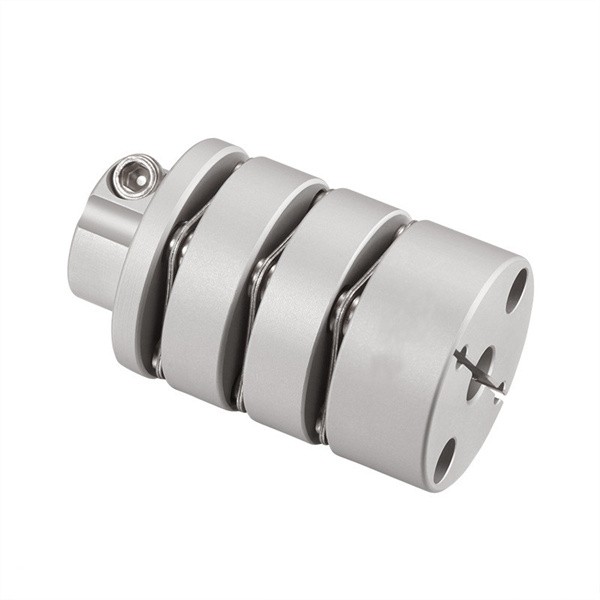Causes of Shaft coupling diaphragm damage
With the development of society, diaphragm Shaft coupling is widely used in the shaft transmission of various mechanical devices, such as pumps (especially high-power, chemical pumps), fans, compressors, and other machinery, because of its elastic vibration damping, no noise, no lubrication advantages, become the ideal product to replace the tooth Shaft coupling and general Shaft coupling today.

But in Shaft coupling use, diaphragm damage will inevitably occur. So what is the reason for this phenomenon?
1. The reason for damage to the Shaft coupling diaphragm.
(1) poor alignment. This is the most likely cause. There is no uniform standard for diaphragm Shaft couplings, so the alignment tolerance of each manufacturer is different. Collars with similar specifications may also have axial deviations.
(2) In the case of four-sided tension and uniform load distribution, the Shaft coupling diaphragm will not be pulled off to destroy the failure; if the load distribution is not uniform, several diaphragms may be pulled off in the process of closing and pulling the diaphragm. (2) In the case of four-sided tension and uniform load distribution, the Shaft coupling diaphragm will not be pulled off to destroy the failure; if the load distribution is not uniform, several diaphragms may be pulled off in the process of closing and pulling the diaphragm. (3) the bolt and Shaft coupling diaphragm mass through the rotation of the centrifugal stress and diaphragm radial, angular deflection caused by bending stress, etc.
(3) the bolt and Shaft coupling diaphragm mass through the rotation of the centrifugal stress and diaphragm radial, angular deflection caused by bending stress, etc.
(4) In the use of diaphragm Shaft coupling, it will be subject to the stack surface stress caused by torque, bending stress caused by axis deflection, centrifugal stress caused by the rotation of the bolt and film mass, and bending stress caused by radial and angular deflection of the film, respectively. The stacked surface stress will cause the bolt to produce shear stress; the bending stress will cause the bolt to create tensile or compressive stress, and the stress cycle will alternate once per week of shaft rotation; the centrifugal force will cause the bolt to produce shear stress, and will vary with the rotational speed. The diaphragm near the bolt hole is subjected to cyclic effects of alternating and compound stresses, leading to fatigue fracture.
(5) Diaphragm Shaft coupling failure mode can be known if the diaphragm near the bolt hole is subjected to the cyclic action of alternating stress and compound stress for a long time. It will lead to fatigue fracture of the diaphragm Shaft coupling. (b) The alignment of the two shafts at the equipment end is not in place, or the spacing between the two shafts is too large, which is beyond the compensation range of the diaphragm Shaft coupling; the transport medium or the production environment is more severe, and the corrosion of the diaphragm Shaft coupling is more serious.
(6) improper management of enterprises or technical personnel inspection is not in place, the above situation is considered more serious, if more serious, may cause industrial accidents, enterprises that do not arrange for regular inspection of technical personnel, or technical personnel did not find the problem promptly, is the negligence of duty, the need to strengthen management.
(7) axial clearance is poor, or the rotor has a tampering situation, which will also cause severe damage to the Shaft coupling diaphragm.
(8) other will also affect the cause of torque caused by the stacked surface stress, axis deflection, and caused by bending stress.
The above is about the cause of Shaft coupling diaphragm damage. If you need more detailed information, welcome to contact us!






